Introduction
Preventive measures could improve these statistics:
- Noncommunicable diseases kill 41 million people annually (World Health Organization [WHO], 2018).
- It accounts for 71% of all deaths (WHO, 2018).
- 15 million are at age between 30 and 69 years (WHO, 2018).
Most of the diseases that lead to fatal outcomes can be prevented, avoided or cured in the initial stages. However, people often forget about the importance of their own health, which gives the world scary mortality statistics (WHO, 2018). Nevertheless, preventive measures and self-checks can improve this situation. Education staff is among the most important workers in any country, as they educate the future of scientists, politicians, and people of art, thereby ensuring the future development of humanity. For this reason, teachers should care about their health and set an example of behavior for children.
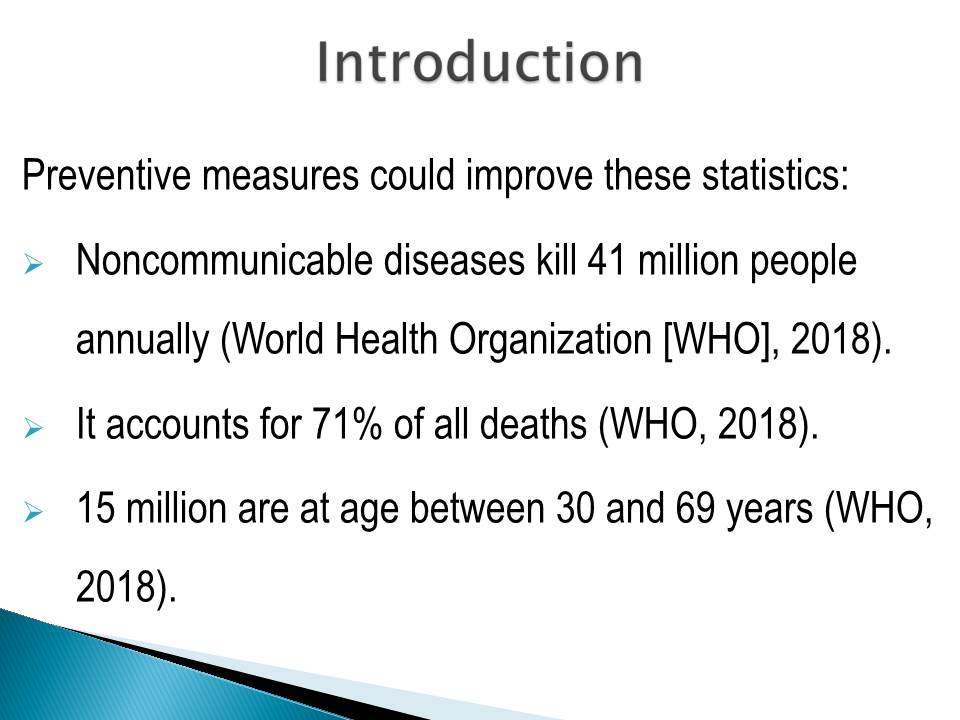
Noncommunicable diseases (NCDs)
Top reasons for death in the world due to health problems, according to WHO (2018):
- Cardiovascular, or heart diseases (7.9 million people annually);
- Cancer (9 million);
- Respiratory diseases (3.9million).
From year to year, the top three disease ratings belong to cardiovascular diseases such as stroke and heart attack, various types of cancer, and respiratory diseases, such as chronic obstruction of the lungs or pneumonia (WHO,2018). The fourth in the ranking is diabetes, which is also often the cause of premature death. Moreover, statistics are preserved in almost all countries, although the order at the top may vary. So in Hong Kong in 2016, cardiovascular diseases caused 20.2% of deaths, cancer was a reason for 30.5% and respiratory diseases for 3.5% (Surveillance and Epidemiology Branch, 2018). Thus, most of these death cases could be avoided with preventive measures, their early detection, and treatment.
Causes of noncommunicable diseases in the world:
- Destructive habits– smoking, alcohol abuse physical inactivity;
- Unhealthy diet – eating of fatty, high-carb foods;
- Overuse of salt, sugar, soda drinks;
- Low consumption of fruits and vegetables.
Quite often, the causes of chronic diseases are not clinical predisposition, but human behavior. Alcohol and smoking can cause lung cancer, liver, and heart disease. Eating large amounts of salt, sugar, fatty foods, and especially sweet soda drinks in food affect the state of blood vessels and complicate the work of the heart muscle. Low physical activity also affects the state of blood vessels, muscles and the general condition of the body, increasing the likelihood of diseases. Lack of fruits and vegetables in the diet leads to a low level of vitamins and minerals in the body, which weakens a person’s immunity.
An unhealthy behavior cause such risk factors as:
- High blood pressure;
- Low or hight glucose level;
- Hight level of cholesterol;
- Obesity.
Unhealthy habits lead to health problems that are risk factors for the development of more dangerous diseases. High blood pressure increases the likelihood of heart attack, stroke , and other heart disease. Obesity also makes the heart functioning more difficult since fat is deposited on the muscle itself. This disease is a reason of liver and pancreatic problems, which can cause diabetes. High cholesterol and blood glucose inhibit the free normal movement of blood through the vessels. Cholesterol collects in blood and blocks vessels, while glucose gradually destroys them. many people do not even suspect that they are prone to these factors until obvious symptoms occur. Consequently, screening and tests are important for early detection and the prevention of diseases.
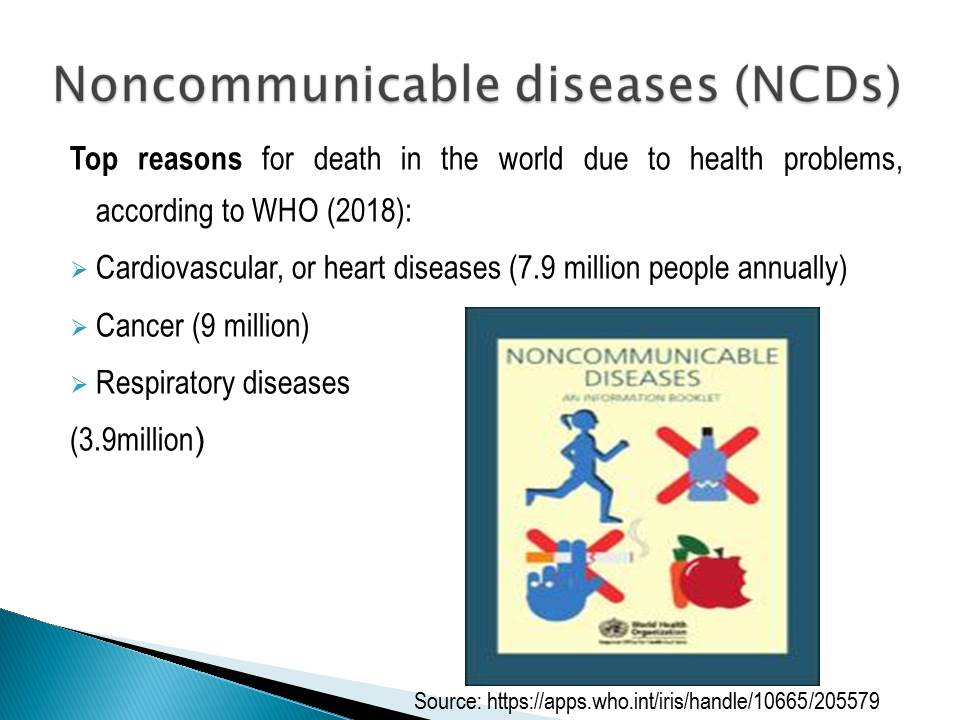

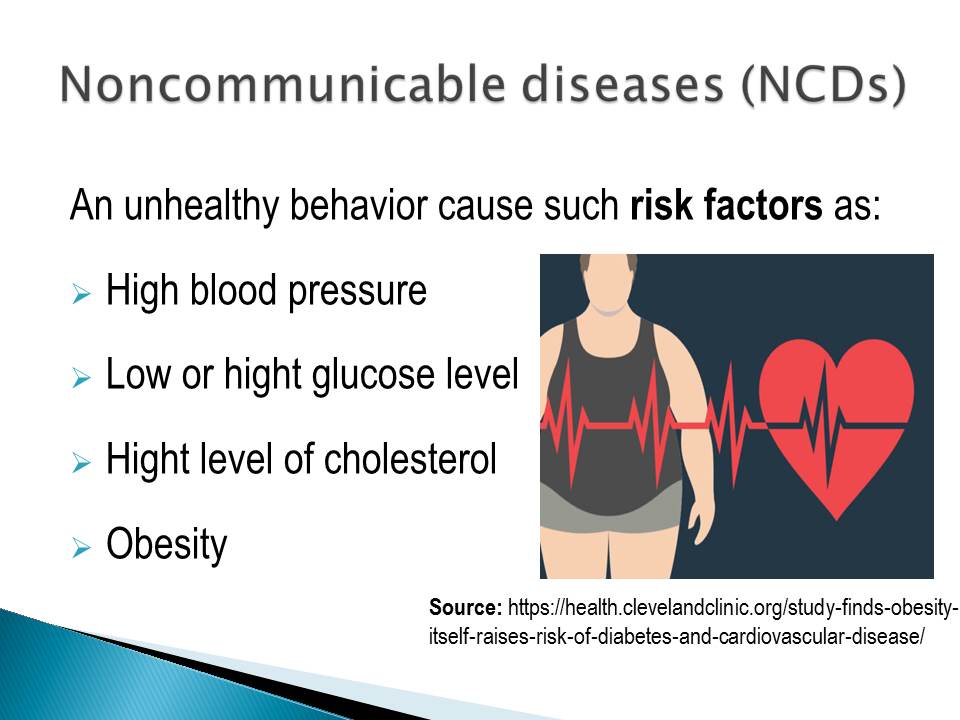
Prevention
Developing good habits:
- Sport activities;
- Balanced diet;
- Using sunscreen;
- Avoiding stress;
- No smoking and alcohol;
- Reducing salt and sugar consumption;
- Setting balance between working and resting hours.
Good habits and a healthy diet help people prevent the development of diseases. – Physical activity and the rejection of harmful and salty foods contribute to the proper functioning of all organs and eliminate obesity. A balanced diet strengthens the immune system due to the sufficient level of all elements necessary for the human body. The balance between work, sleep, and hours of rest helps to avoid stress and overwork, which can damage the heart. In addition, the use of sunscreen helps to protect the skin from the sun’s radiation causing cancer and skin problems.
Self-checking and screening:
- Regular testing of blood pressure and composition;
- Self-checking of body changes;
- Regular doctor visits;
- Regular checking by x-ray, ultrasound, mammogram machine.
It is necessary to do tests and visit doctors regularly to identify health problems in the early stages. The easiest way for people to check is to monitor their well-being and notice any changes. However, a person needs to worry only if a symptom manifests itself for a long time. Also, anyone can independently check his or her body for moles, spots, or lumps. It is also necessary to do general tests and undergo x-rays and ultrasounds regularly to detect problems in the early stages of development. All tests have different terms of relevance, for example, an X-ray can be used once a year, and a cardiogram needs to be done every six months.
Frequency of screening at age 40 to 64 (“Physical exam frequency,” n.d.):
- Pelvic exam and Pap smear – once in 3 years;
- Breasts or testicular examination – once in 1 year;
- Mammogram – once in 1 year;
- Diabetes screening – once in 3 years.
- Colorectal cancer screaning– once in 5 years;
- Chest x-ray – once in 1 year;
- Blood pressure and cholesterol – once in 1 year.
For people under 40 this tests are necessary if they have symptoms or additional risk factors.
Youth need screenings much less often than people over 40, since the risk of getting the disease increase with age. However, it is necessary to undergo routine and physical tests at least once a year, and women should also regularly visit a gynecologist. Besides, if there is a history of a family illness or additional risk factors such as obesity, smoking, or abuse of junk food and alcohol, it is worth going through screenings at least once in a few years.
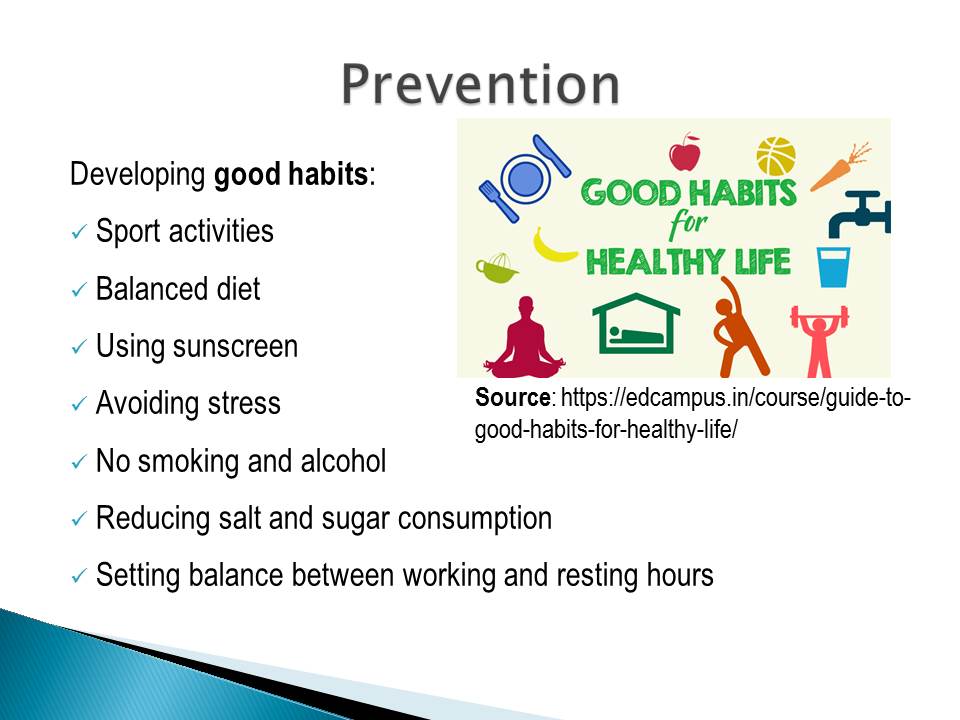
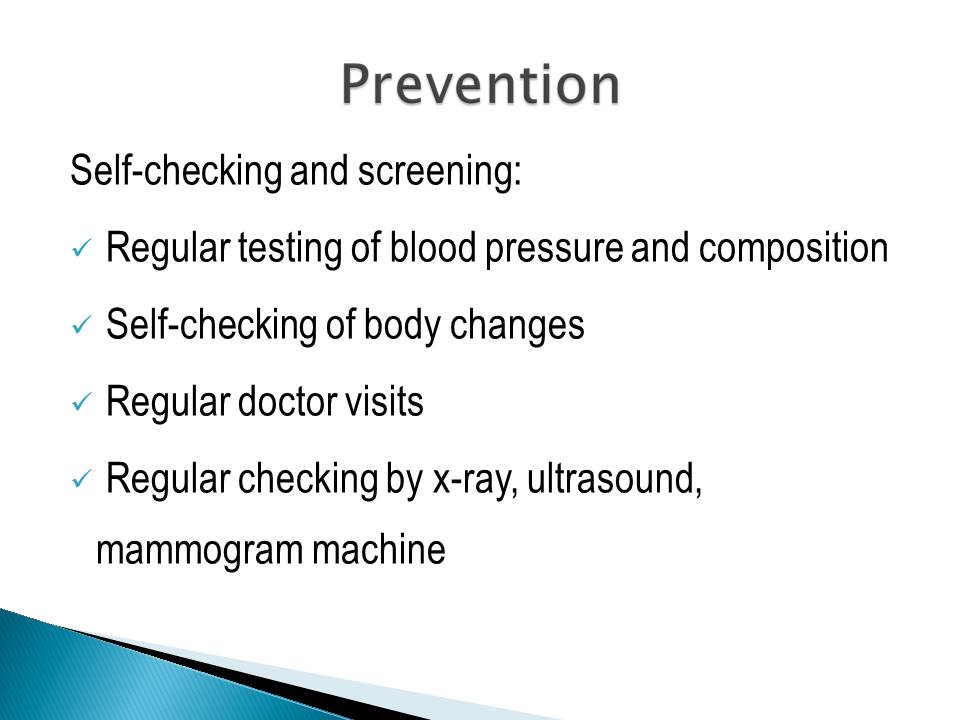
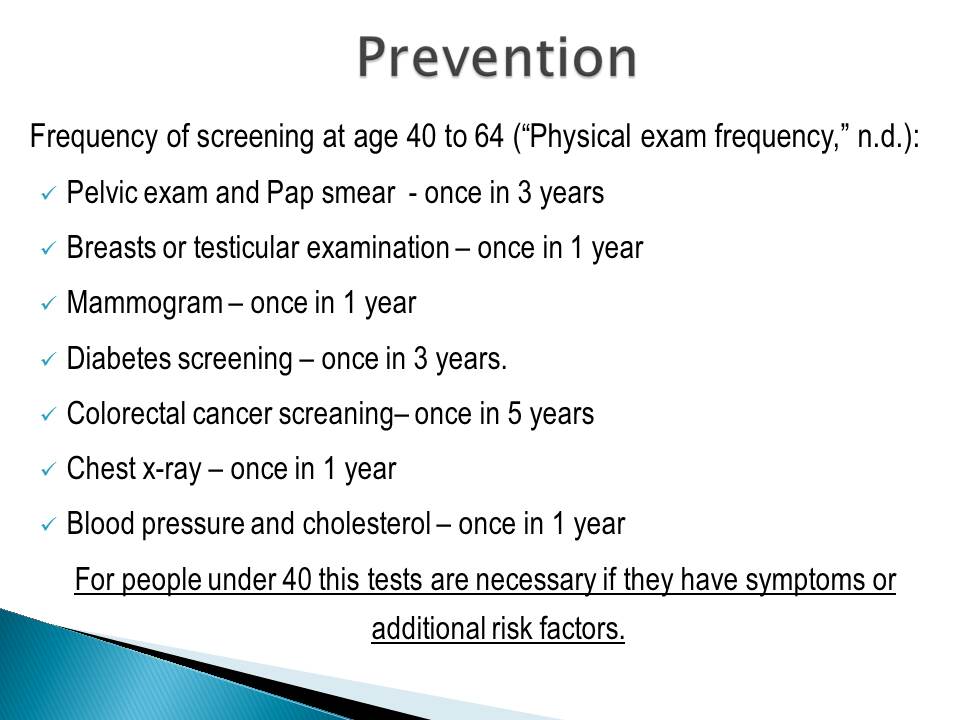
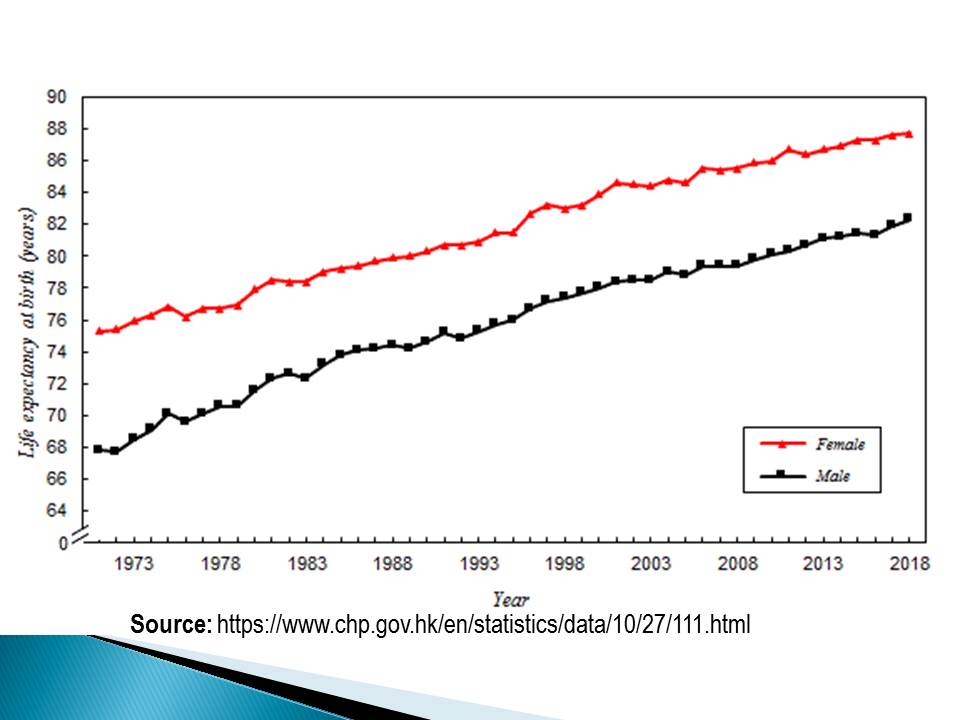
Myths about medical radiation
Dose of radiation during medical tests (The American Cancer Society, 2018):
- Ultrasound does not expose person to radiation;
- X-ray of teeth – 0,01 mSv;
- PET/CT – 25 mSv;
- Chest x-ray – 0,1 mSv;
- Mammogram – 0,4 mSv.
Many people fear that medical tests expose them to radiation, which can cause cancer and other negative consequences. However, although some medical devices do emit radiation, its dose is small and has no real effect on the body. For example, a person receives 3 mSv of radiation annually from the environment, and one x-ray of teeth equals one day of radiation exposure (The American Cancer Society, 2018). Moreover, a flight in an airplane brings a person three times more radiation than a x-ray of teeth, precisely 0,03 mSv. At the same time, tests such as ultrasound, MRI, X-ray, tomography, and others are necessary to check the internal organs and their injuries.
Real facts about radiation from the medical test:
- Has almost zero chance of causing cancer;
- Is used for the destruction of cancer cells;
- Does not affect fertility.
One of the most common misconceptions is that radiation provokes cancer. This fact is correct only in the case of large doses of long-term exposure, but the doses emitted by medical devices are not enough. Radiation therapy also is used to reduce cancerous tumors, so concerns about x-rays or mammography are unfounded. There is also a common myth that radiation from devices can cause infertility, but it is also false. In medical practice, not a single such case was recorded (“The most common medical radiation myths,” 2018). Therefore, radiation from medical equipment is safe for people, and its use does more good than harm.
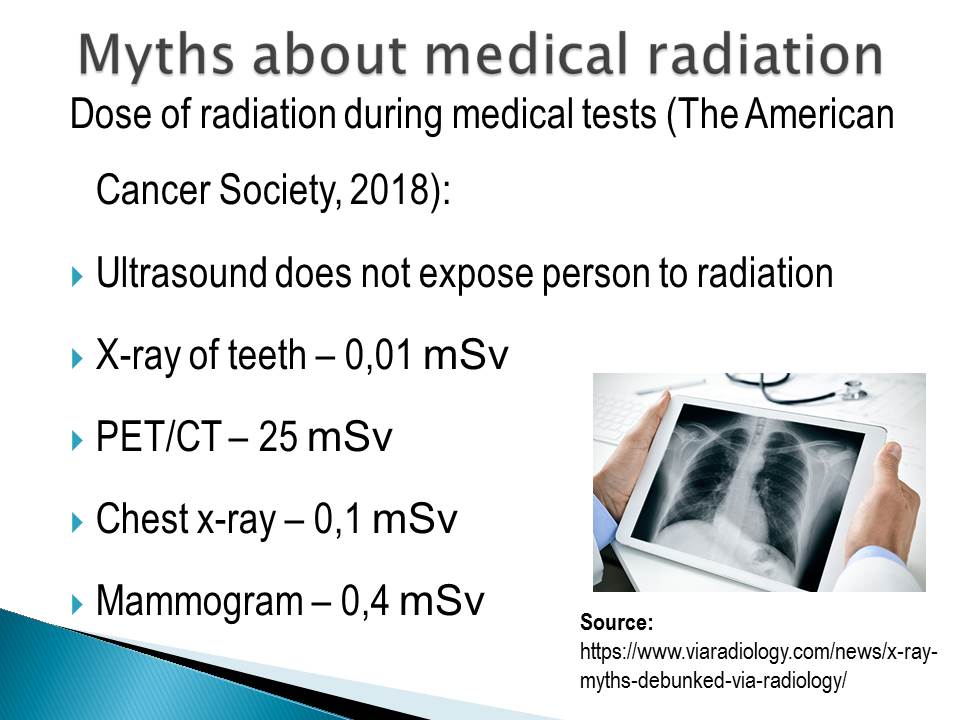
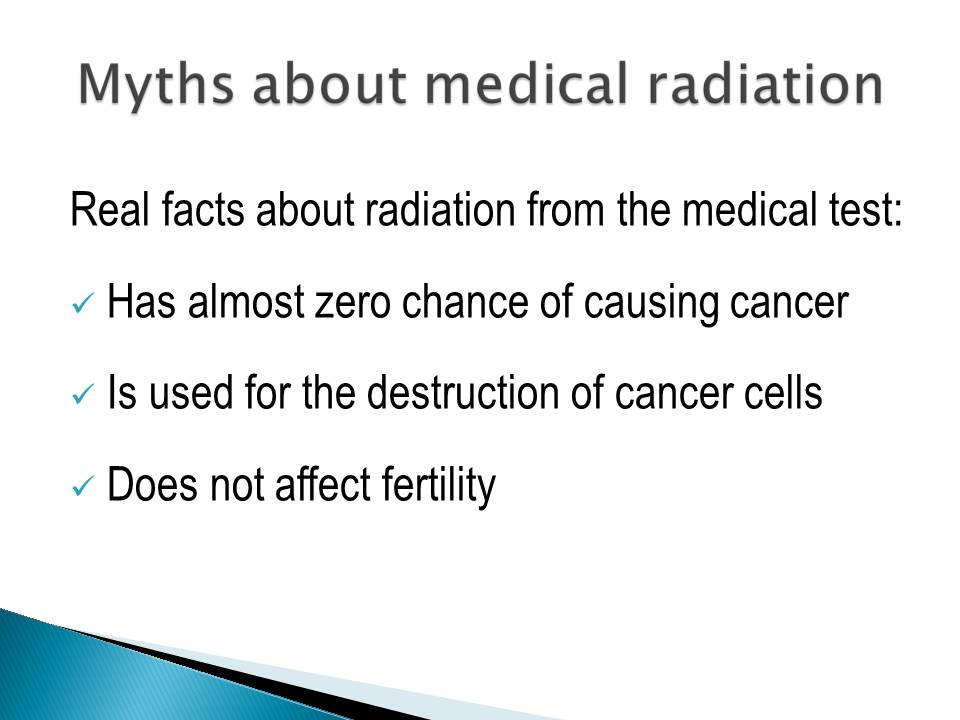
Conclusion
The best measure for preventing chronic diseases and premature death:
- Self-examination;
- Healthy lifestyle;
- Regular testing, scanning and visiting medical specialist.
In conclusion, all people should follow the rules of healthy eating and habits, monitor their health, and visit medical specialists regularly. These measures help us to protect themselves from diseases, their long-term treatment, and reduce the likelihood of premature death. These rules are quite simple if a person is worried about his or her own health and understands its value. Regular screening, especially for people at increased risk of cancer, diabetes, and cardiovascular disease, is necessary for timely treatment and control of illneses and reduction of chances for premature death. At the same time, education workers must adhere to the right habits even more carefully to provide children with an example of healthy behavior and educate a new generation of responsible and active citizens.
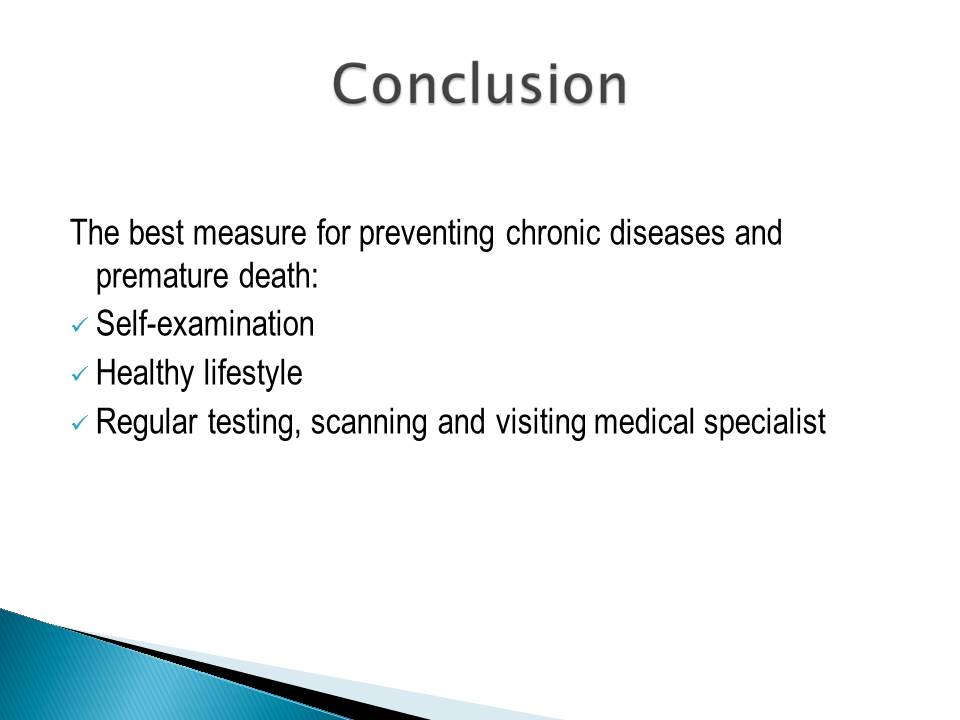
References
The American Cancer Society. (2018). Understanding radiation risk from imaging tests. Web.
The most common medical radiation myths dispelled. (2018). Web.
Physical exam frequency (n.d.). Web.
Surveillance and Epidemiology Branch, Centre for Health Protection of the Department of Health (2018). Acting on Non-communicable Diseases. Web.
World Health Organization. (2018). Noncommunicable diseases. Web.